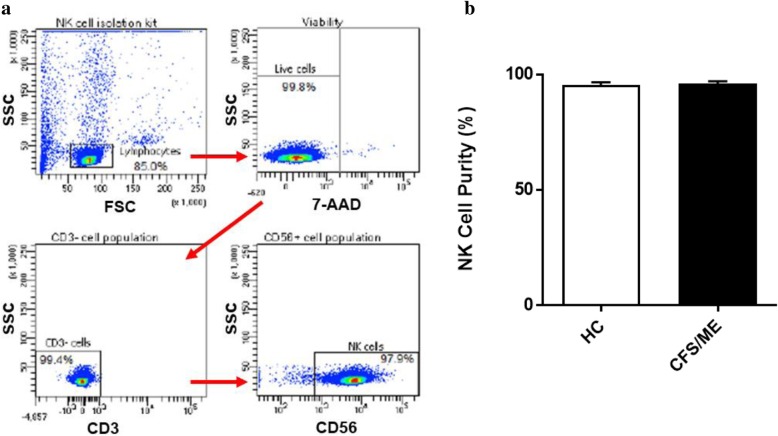Syndrome of chronic fatigue / myalgic encephalomyelitis (CFS / ME) is a complex multifactorial disease of unknown cause with multi-system events. Although the etiology of CFS / ME remains elusive, immunological dysfunction and specifically low cytotoxic activity in natural killer (NK) cells is the result of more consistent laboratory.
The transient receptor potential (TRP) superfamily of cation channels play a central role in the pathophysiology of immune diseases and are therefore potential therapeutic targets. We have already identified single nucleotide polymorphisms in the genes of the TRP in NK peripheral cells of patients of CFS / ME.
We also described the changes in biochemical and signaling pathways calcium disturbances in NK cells of patients with CFS / ME. In particular, we have previously reported a decrease in the cation channel TRP function subfamily member melastatin 3 (TRPM3) in isolated NK cells from patients CFS / ME compared to healthy controls after modulation with pregnenolone sulfate and ononetin using a patch-clamp technique.
In this study, we aim to confirm the previous results describing a TRPM3 activity with disabilities in a new cohort of patients with CFS / ME using a technical whole cell patch clamp after modulation by agonists TRPM3 reversible, the pregnenolone sulfate and nifedipine, and an effective antagonist TRPM3, ononetin. Indeed, no formal research has commented on the use of pregnenolone sulfate or nifedipine to treat CFS / ME patients when there is evidence that clinicians prescribe calcium channel blockers to improve different techniques of cell patch clamp symptoms.
Whole was used to measure activity in TRPM3 isolated NK cells from twelve healthy controls age and sex and CFS patients / ME, after activation with pregnenolone sulfate and nifedipine and inhibition ononetin .
We have confirmed a significant reduction in the amplitude of currents after TRPM3 sulfate stimulation pregnenolone in isolated NK cells from another cohort of patients with CFS / ME compared to healthy controls.
The ionic currents evoked by pregnenolone sulphate TRPM3 way were again modulated significantly by ononetin in isolated NK cells from healthy controls compared to patients CFS / ME. In addition, we used nifedipine, another agonist reversible TRPM3 to support the previous results and found similar results confirming a significant loss of activity TRPM3 channel activity CFS / ME was patients.
Impaired TRPM3 validated in isolated NK cells from patients with CFS / mE using different techniques of whole-cell patch clamp pharmacological tools and as the gold standard for ion channel research. This survey also establish channels TRPM3 as prognostic marker and / or a potential therapeutic target for CFS / ME.

Evaluation of four clinical laboratory parameters for the diagnosis of myalgic encephalomyelitis.
CONTEXT
myalgic encephalomyelitis (ME) is a complex and debilitating disease that often present initially with flu-like symptoms, accompanied by debilitating fatigue. Currently, there are no biomarkers objectives or laboratory tests that can be used for diagnosis unequivocally ME; Therefore, a diagnosis is made when a patient encounters a series of criteria for inclusion and exclusion of costly and subjective. The purpose of this study was to evaluate the utility of four clinical parameters in the diagnosis ME.
METHODS
In this study, we used logistic regression and classification and regression tree analysis to conduct a retrospective survey of four clinical laboratories in ME 140 cases and 140 healthy controls.
RESULTS
The correlations between covariates were between [- 0.26, 0.61]. The best model included serum levels of the soluble form of CD14 (sCD14), serum levels of prostaglandin E2 (PGE2) and serum levels of interleukin-8, with coefficients of 0.002, 0.249 and 0.005, respectively, and p-values of 3 × 10-7 1 × 10-5 and 3 x 10-3, respectively.
CONCLUSIONS
Our results show that these parameters may help doctors in their diagnosis of ME and may shed more light on the pathophysiology of this disease.
